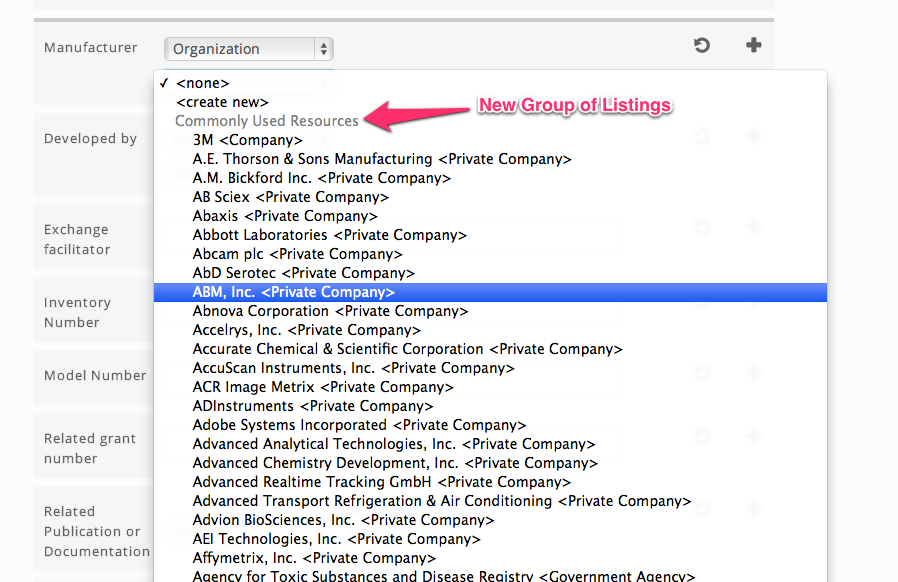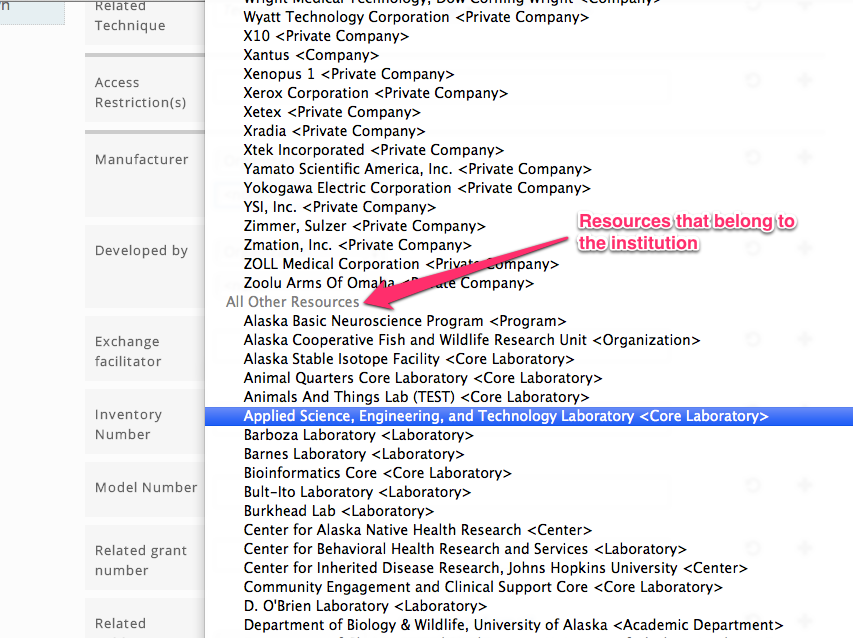Contents
About
This feature is available in version 2.0-MS1.11 and later.
In order to avoid unnecessary duplication of data across institutions, increase standardization, and ease as much of the burden of data entry on users as possible we have introduced a new concept of Commonly Used Resources. This concept has been internally referenced as globals and this is reflected in the choice of property names. These resources will reside in a central repository, maintained by the eagle-i team. All institutions will have read-access to. We strongly encourage users to select from Commonly Used Resources when entering data in SWEET.
As of the 2.0-MS1.11 release, only resources that have the following resource types are eligible to be Commonly Used Resources:
Application effect
SWEET - background effects
Once the SWEET application has been configured to use Commonly Used Resources, the application will periodically query the Commonly Used Resources data repository for a minimal set (label and URI) of information from the published data. SWEET will then place a local copy of this minimal set of information in its own data repository, in a specialized graph (NG_GlobalProxy). Subsequent uses of SWEET will present selections for the user from this specialized graph as well as the default and published graphs.
SWEET - entering data
In fields which have one of the above mentioned types as a range, users will now see a new group of listings at the top:
Resources that are not Commonly Used Resources will be listed at the bottom:
All other applications
From the perspective of the other eagle-i applications (search, dissemination pages), there is no visible effect. The triples containing the Commonly Used Resources will be resolved as the triple that it is.
Use
This section documents how institutions/clients can use Commonly Used Resources in their applications. This section does not detail how to set up the Commonly Used Resources data repository itself.
In order to use this feature, please make the following configuration changes.
New user in the institution's data repository
Activation
To activate this feature, the following must take place:
Client / Institution:
- Create a user for the repository which has the role of 'Automated Agent', i.e. iAmGlobalUser
- The Automated Agent role has add, remove, read access to the GlobalProxy graph.
- Add the following properties to the non-credentialed properties file:
- eaglei.datatools.uses.globals
- eaglei.datatools.globalRepository
[TODO] Optional properties
[TODO] Update properties document
- Add the following properties to the credentialed properties file:
[TODO]
- Add a new / edit whoami.xml file
[TODO: <global></global>]
Data Migration
[TODO] How to migrate existing data to use the globals
Advanced Topics
[TODO] Details about the implementation
[TODO] global annotation on type
[TODO] Use of the proxy ng
[TODO] Global instances are not searchable as a resource themselves
[TODO] NB: Tomcat will appear to take a little bit longer to shut down. This is expected because of the code for the global harvesting.
Troubleshooting
- I can't see any commonly used resources as options for Private Company and Funding Organization in my SWEET.
- Verify that your repository successfully harvested the globals
[TODO] expected logs for successful global harvest
- Verify that your properties have been configured
[TODO] expected logs for correct configuration
[TODO] example logs of incorrect configurations
- Verify that your repository successfully harvested the globals

